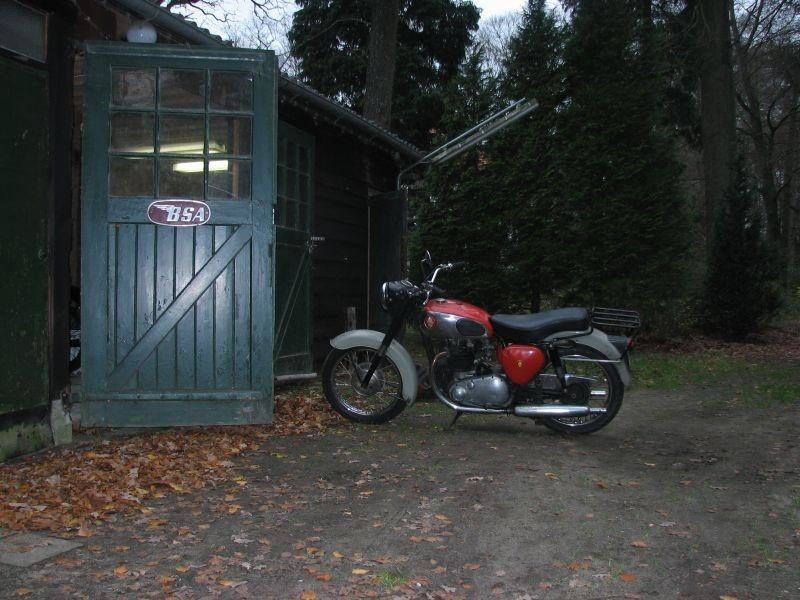Get off at Storm
BSA ... Haters of the brand explained the abbreviation with Bij Storm Afstappen. Connoisseurs cherished "Birmingham Small Arms" and the logo was called "the piled arms". All over. Museum stuff. Or not?
One of the highlights of BSA was the A 10. A brute of a machine. Ideal for long, heavy journeys and better cracking. Because soon! It was not for nothing that the A 10 was called "The Golden Flash" in one of its versions. The 6,5 on 1 compressed 646cc machine achieved the full… 37 hp at 5750 revolutions from the depth of its two cylinders. Yes! Unbelievable !? In 1954 the machine cost a lot of money. Converted to 1400 euros. And if you look at what a workman once had as a weekly allowance, then motorcycling has become quite cheap. With its perfectly shifting four-speed gearbox, the A 10 ran 165 kilometers per hour according to the booklets.
We are then talking about classic British construction.
Which was still quite revolutionary at the time. The engines impressed with their power, top speed and handling that was born on British roads. After all, it was only in 1964 that that strange island to the left of IJmuiden got its first motorway. That was the final blow to the British motorcycle industry, which was ravaged by bad management. British motorcycles could dance perfectly through the most beautiful inside corners. But running marathons on a motorway stopped them. They weren't made for. They couldn't stand it. But it went just as well in England at first. In 1951 the company bought 'Triumph Motorcycles became the Honda of its time. The largest in the world. The Honda of its time.
Today, BSA's are collectors' items with transience value. It is significant that the passion for the brand has no continuity. As with many clubs of 'disappeared brands', the age of the enthusiasts is increasing and there are hardly any young recruits. In 1973 the last BSA left the gate. The enthusiasts who have really driven and known the brand are now really all of the age that the average motorcyclist has today. And that puts at least the 40+ crosses behind his name, according to the statistics, but in reality it is rather 60+ at many classic clubs. And now the current 'sixty' is just 'the new fifty', but still….
Better or more fun?
It goes without saying that all modern motorcycles are immeasurably better than such a recognized classic. But it is sometimes funny to realize what used to be the norm. Which means that motorcyclists now ride what they ride. And the 'comparison with' makes no sense. After all, you don't compare petroglyphs with your flat screen that is more than a meter wide. But if you go for ordinary, deeply experienced motorcycle fun, then a classic is not a bad option at all. The prices of classics are not too bad. And you don't write off on it. The parts supply, that many importers of today could take as an example. The prices of the parts are low compared to today. A good BSA or other classic is just as usable now as it used to be. You can use it as if…. like… Like it's just a motorcycle. Especially with the average annual mileage of today. Service intervals are of course much shorter. But on the other hand, you can carry out all maintenance and minor repairs yourself. And the current traffic image and the current flash frequencies mean that you lose your driving license just as easily with such an oldie as on the coolest supersport.
Our tip for thirty people is: Buy a BSA or another classic









[…] You can read the complete article on our sister site Auto Motor Klassiek read. […]
BSA means Birmingham Small Arms.
The factory originally started as a weapons factory and was located in - you guessed it - Birmingham.
Sincerely,
Ger de Graaff.
BSA !! Yes, I also drove was great! The sound, the power, brutal and easy to maintain yourself, nice to see, technically excellent!
If only I had one !!